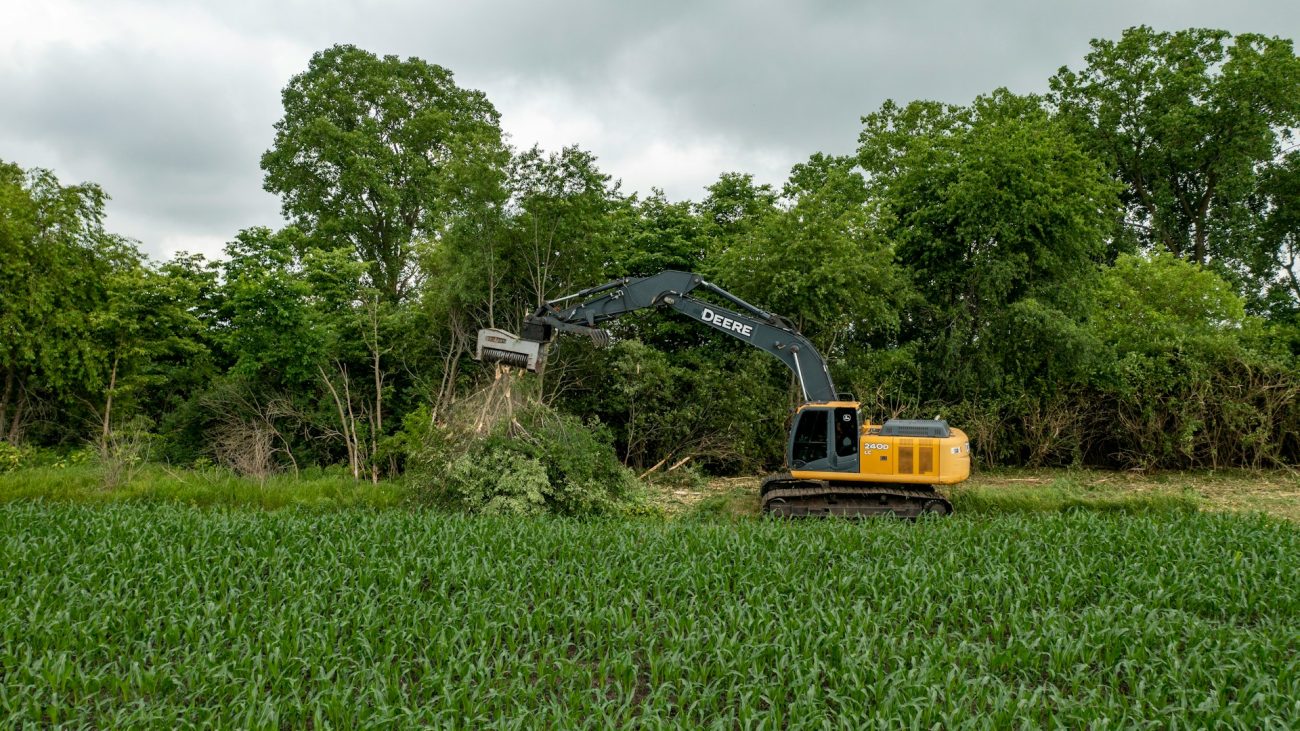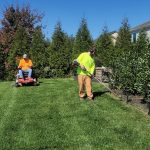
When it comes to preparing your land for a new project, understanding the difference between land clearing and land grading is key. Both are crucial steps in ensuring your property is ready for any new development, but they serve different purposes. The distinction between these two processes can help property owners make informed decisions in Elgin, Illinois.
In simple terms, land clearing involves the removal of trees, shrubs, and any debris to make way for new construction or farmland. On the other hand, land grading deals with leveling the surface to ensure proper water drainage and soil stability, setting the stage for a variety of constructions and landscaping projects. Knowing the differences can save you time, money, and stress when embarking on your next project.
What is Land Clearing?
Land clearing is all about preparing a piece of land for a new purpose. Imagine planning a new building or wanting to expand your agricultural space. The first step in these scenarios often involves clearing the land. Here’s what land clearing typically includes:
– Tree Removal: Taking down trees to open up the space.
– Bush and Shrub Removal: Clearing away bushes and shrubs that obstruct the area.
– Debris Elimination: Removing any unwanted debris or waste material that could hinder your project.
Consider land clearing as a clean slate for your property. For instance, if you’re planning to build a home, the land needs to be free of trees and debris that could interfere with construction. Likewise, farmers may need to clear land to make more room for crops. Land clearing makes it easier to lay the groundwork for new projects by providing a cleared, obstruction-free area.
Land clearing not only provides more room but can also improve visibility and safety on your property. Clearing away unnecessary vegetation reduces the risk of wildfires, especially during hot and dry periods. It’s an indispensable part of transforming a wild or overgrown area into a usable, functional space. In Elgin, with its mix of residential and rural areas, effective land clearing can make a significant difference when preparing for construction or agricultural use.
What Is Land Grading?
Land grading focuses on leveling the land’s surface to make it suitable for specific projects or uses. Think of it as shaping the land to meet your needs. This process involves moving soil to level or slope the ground, improving both water drainage and soil stability.
Here’s why land grading is valuable:
– Improved Drainage: Grading prevents water from pooling, protecting structures and reducing erosion.
– Soil Stability: It stabilizes the soil, which is vital for buildings, roads, and other infrastructure.
– Preparation for Construction: Ensures a stable foundation and correct elevations for new buildings or landscapes.
Land grading doesn’t just make things look neat. Setting up a well-graded property can also reduce maintenance concerns. For example, if you’re getting ready to build a backyard patio in Elgin, having a properly graded lot can help prevent rainwater from flooding your new patio.
Key Differences Between Land Clearing and Land Grading
While land clearing and land grading both prepare property for new uses, they do so in distinct ways. Their methods and goals differ, making it essential to understand each before starting a project.
– Purpose: Clearing is about removing obstacles, while grading focuses on shaping the land for drainage and stability.
– Process: Land clearing involves cutting down trees and removing debris. Grading reshapes the soil to create the desired slope.
– Equipment: Clearing uses chainsaws and bulldozers for removal. Grading relies on graders and backhoes to move earth efficiently.
Knowing these differences helps you in making the right choice for your property. Each process requires specific equipment and expertise, which means understanding your goals is crucial to pick the best fit for your needs.
Choosing the Right Service for Your Project
Deciding between land clearing and land grading depends on what you need to achieve with your land. Here are a few guidelines to help with your decision-making:
– Assess Your Goals: Are you getting rid of obstacles to build a structure, or are you preparing your land for better water flow and stability?
– Consider Elgin’s Terrain: The local geography can influence your choice. Certain areas might need more clearing due to dense vegetation, while others may require grading to handle runoff efficiently.
– Hire Professionals: For accurate results, especially in areas like Elgin where terrain conditions vary, hiring skilled professionals can make a huge difference.
Making the Right Choice for Your Landscape
Understanding the specifics of land clearing and land grading can greatly impact the success of your project. Both processes play essential roles in preparing land, each with its unique purpose and techniques. By considering the differences, benefits, and requirements, you can make informed decisions that align with your project goals.
Ultimately, the right choice will depend on your needs and the specific conditions of your site. Carefully evaluating these factors will help ensure your project gets off to the best start. With expert services available to guide you, transforming your land into a functional and beautiful space just got more achievable.
Finding the right service to prepare your land can make all the difference in a successful project. Whether you’re opening up space or ensuring the ground is level and stable, getting expert help can streamline your efforts. If you’re in Elgin and looking for reliable support crafted to your needs, explore our trusted land grading services near me provided by Bright Green Landscapes. Our team is committed to turning your land into the perfect foundation for your upcoming ventures.







